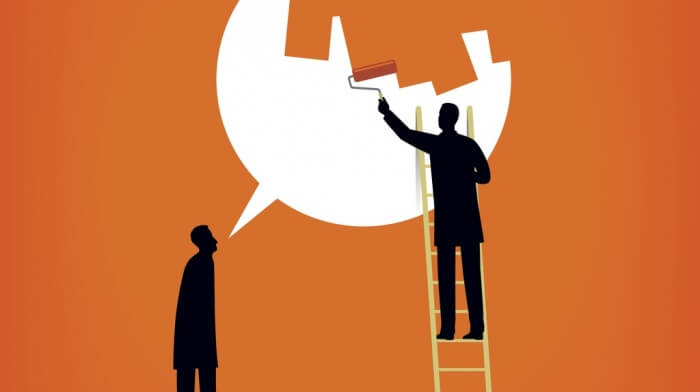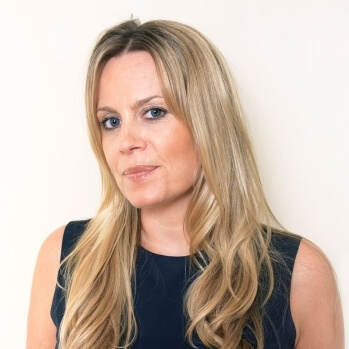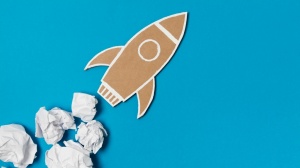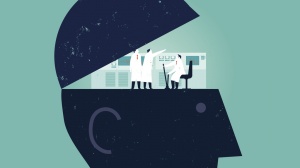How To Use Neuroscience To Build The Perfect Creative Team
Author Claire Bridges shares insights to manage our state to be more creatively prolific in 2017.

Creativity has been part of my professional life for over twenty years working in PR and then as a trainer and consultant. I’ve always been fascinated by what’s actually playing out on the hills and valleys of our 3lbs of grey matter whilst we’re generating creative ideas.
People often ask what the secret is to getting into ‘the creative zone.’ Is there a way to switch your creativity on and off? To help me understand more I teamed up with neuroscientist Ben Martynoga for my new book In Your Creative Element to learn more about how different brain states affect our creative thinking.
Below is a whistle-stop tour of what I explore further in the book about how our brains work in relation to creativity.
The book is based the framework of the Periodic Table (that you might remember from your science lessons) and as part of my ‘Periodic Table of Creative Elements’ I’ve identified 62 ‘creative elements’.
Based on a review of many studies into creativity from neuroscience and psychology we’ve identified 10 creative elements below as a way to think about our mental toolkit.
· The first is the unconscious mind (Um) the mode of thinking that is intuitive, unconscious and fast rather than systematic, logical evidence-based thinking (L), referred to in Daniel Kahneman’s masterly book Thinking Fast and Slow as system 1 and system 2 thinking.
The creative element of emotion (E) relates to the fact that whilst we may think we’re being rational, our first reaction is always emotional.
· When we’re awake but relaxed, scientists can detect waves of electrical activity lapping across the surface of the brain: these are alpha waves, and in tests it was observed that people who have high creative output have more alpha waves.
In this relaxed mind (Re) state is when we unwind and allow our tentative ideas and growing hunches to bubble up to the surface.
· To tap into our wandering mind (W) is to allow for distraction, which may seem counter intuitive. But allowing time to daydream can throw up sticks of creative dynamite.
· The insightful mind (In) takes over when you’ve done the legwork first so you can wait for the lightning strike of inspiration and make associations.
· You’re given a brief to come up with a new campaign for a brand of cheese. Without thinking about it you come up with a mental list, which includes cows, sandwiches and cucumber.
What you are doing here is using a part of the brain Martynoga calls the associating mind (As). This is joining the dots and making the connections so vital for new ideas to form.
· When generating ideas don’t worry about having good ideas, just have lots of ideas and evaluate later. This is the work of the prolific mind (Pm).
· The improvising mind (Ir) calls for you to put your inner critic on ice and get into creative flow. Leave the judging for your analytical mind (Am) – a conscious process that works with your logic (L) to plan, evaluate and plot.
So when you’re thinking about building creative teams you can undertake an informal assessment of everyone’s mental preferences and how you can best work together:
1. Next time you have a creative problem, try to keep tabs on the mental processes you used in solving it. Does your workflow tap into any of the elements we’ve identified above?
2. Do you have a natural preference for any particular mode of thinking over another?
3. If you find yourself always drawn to a particular style of thinking, try to shake things up. If you’re usually very focused and logical, try loosening your grip. If, on the other hand, your mind wanders too readily, see if it helps to force yourself to put in a bit more analytical graft first.
4. Compare your preferences with those of your team members – are there similarities, differences or clear gaps in thinking styles? Think about how you can leverage what’s been termed the ‘whole brain’ of the team.
We can all try to be more creative by exploring every crevice of our brain and to try to switch between different, often contradictory, modes of thought. Know when to put in conscious, effortful mental work and know when to let the mind perambulate and surrender to the powerful workings of the unconscious mind.
Thanks for signing up to Minutehack alerts.
Brilliant editorials heading your way soon.
Okay, Thanks!




